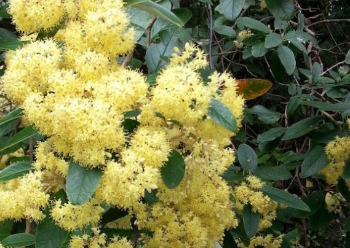Home > Archives > 1st October 2018 Issue > Gardening with Gael - Kumara lovers: Why not plant your own?

MANGAWHAI'S NO.1 NEWSPAPER
|
|
|
Gardening with Gael - Kumara lovers: Why not plant your own? I watched with horror this winter as the price of kumara soared. Everything I have read says that, as a crop, kumara is reasonably easy to grow. Why not grow it ourselves? Box thought yes, that may be a good idea, and I have been waiting for just the right time to plant and also write an article. I watched with horror this winter as the price of kumara soared. Everything I have read says that, as a crop, kumara is reasonably easy to grow. Why not grow it ourselves? Box thought yes, that may be a good idea, and I have been waiting for just the right time to plant and also write an article. Apparently the best time to plant is when the lovely native kumarahou is flowering. Early this week as I was driving back from Whangarei, I noticed all along the side of the road the clusters of light banana yellow flowers which reminded me. Kumarahou or Pomaderris kumerahou are relatively small shrubs which grow in the northern areas of the North Island (Te Ika A Maui) often on the margins of the bush and by the side of the road. There are several blooming now on Molesworth Drive. The common English name was Gumdigger’s soap because the flowers, when wet, could be rubbed in the hands as soap. I am amazed that this attractive plant has not found its way into our herbaceous borders. The kumarahou flowers are a good indicator kumara should be planted when there is no chance of frosts. Some information says any time between August and December, depending how far north you live. In our area early October seems a reasonable time. In the meantime, prepare the beds ready for the plants. Raised garden beds are ideal and add some compost. By October the ground is warming. After Labour Weekend is a recommended time to plant. The most common kumara is the red kumara or Owairaka red. This kumara has a distinctive purplish/red skin and creamy white flesh. It is the kumara we all grew up with and comprises approximately 75 percent of kumara planted. It roasts well and retains its shape and flavour. A more recent variety is the orange kumara or Beauregard, a United States cultivar introduced in 1993. This is the sweetest variety and becomes quite caramelised when roasted which makes it ideal in a salad. This variety takes less time to cook. It also mashes really well. Tokatoka gold is a New Zealand cultivar indigenous to the Kaipara and named after the Tokatoka peak rising out of the flat area which was known as the Tokatoka swamp. A cream skin and flesh with a sweet flavour this kumara is often used in curries. Purple dawn is a new variety of kumara bred by Plant & Food Research that is purple right through. The flesh resembles that of a beetroot. Kumara plants are available from garden centres. They are usually purchased as bare root runners ready to plant. I Googled ‘where to buy kumara plants’ and was rewarded with more outlets than I thought there would be. Once they are planted keep weeded and watered during dry spells. As the vine ‘runs’ keep lifting from the surrounding to encourage the growth of the tubers. Try not to let the runs form any roots of their own. Once planted, kumara take about five months to mature and need harvesting before there is any chance of frosts. I remember helping my first mother-in-law Rua, who used to grow kumara every year, harvest her crop. Once we had them out of the ground and dried off we wrapped them individually in newspaper and stored them for the year. It seems an attractive proposition. The time to plant kumara is when the Kumarahou or Pomaderris kumerahou is flowering. |


